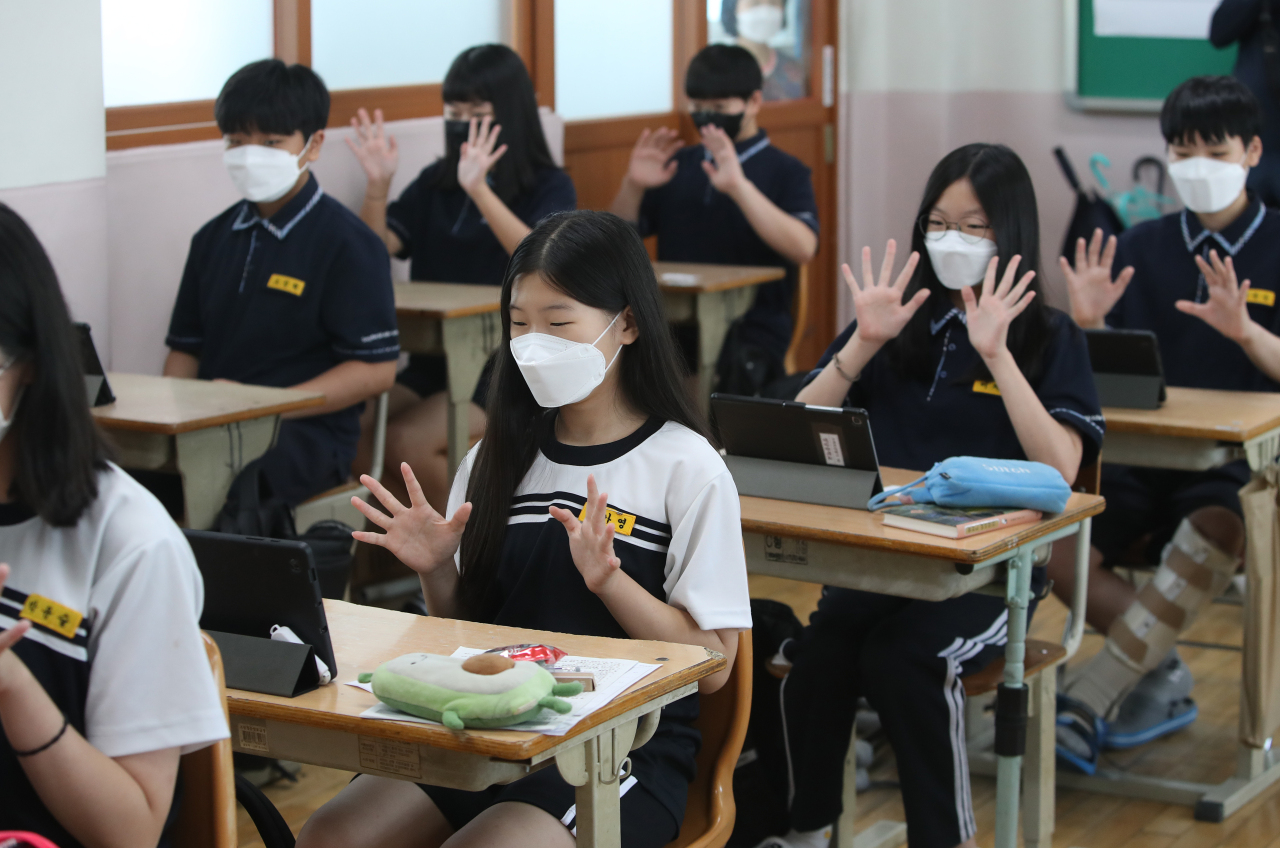 |
Students watch a program on their tablets in a middle school in Daegu, 302 kilometers southeast of Seoul, on Wednesday. (Yonhap) |
The Ministry of Education will use a supplementary budget to alleviate classroom crowding in order to bring more students back into school buildings come September amid the COVID-19 pandemic, the ministry's document has shown.
According to the document shared with Yonhap News Agency by Rep. Lee Eun-ju of the minor opposition Justice Party on Thursday, the ministry asked education officials nationwide to use the supplementary budget, 6.36 trillion won ($5.5 billion) in total, to solve the problem of overcrowded classrooms, by building, for example, makeshift classrooms.
The decision came after packed classrooms, usually more than 30 students each, are seen as one of the major obstacles to the ministry's plan to expand in-person classes in the fall semester.
The ministry has been seeking to bring all students back into classrooms out of concerns over a widening gap in educational achievements, among other things, amid the protracted pandemic. As the fourth wave of the coronavirus infections swept the country, however, the ministry said earlier this month that a full resumption of classes will hinge on the severity of the pandemic.
Rep. Lee said six regional education offices -- Seoul, Daegu, Gwangju, Ulsan, Chungcheong Province and Jeju -- specifically raised the issue of crowded classrooms as a problem they will tackle with the support of the budget.
Calling the move "meaningful," the lawmaker said the ministry should work toward reducing the average number of students in a class ultimately down to 20.
According to the ministry, 1,374, or 11.5 percent of the total 11,942 schools nationwide, have at least one or more classes with more than 30 students. Middle schools took up the largest number at 812, followed by elementary schools at 350 and high schools at 212. (Yonhap)





![[Exclusive] Hyundai Mobis eyes closer ties with BYD](http://res.heraldm.com/phpwas/restmb_idxmake.php?idx=644&simg=/content/image/2024/11/25/20241125050044_0.jpg)

![[Herald Review] 'Gangnam B-Side' combines social realism with masterful suspense, performance](http://res.heraldm.com/phpwas/restmb_idxmake.php?idx=644&simg=/content/image/2024/11/25/20241125050072_0.jpg)
